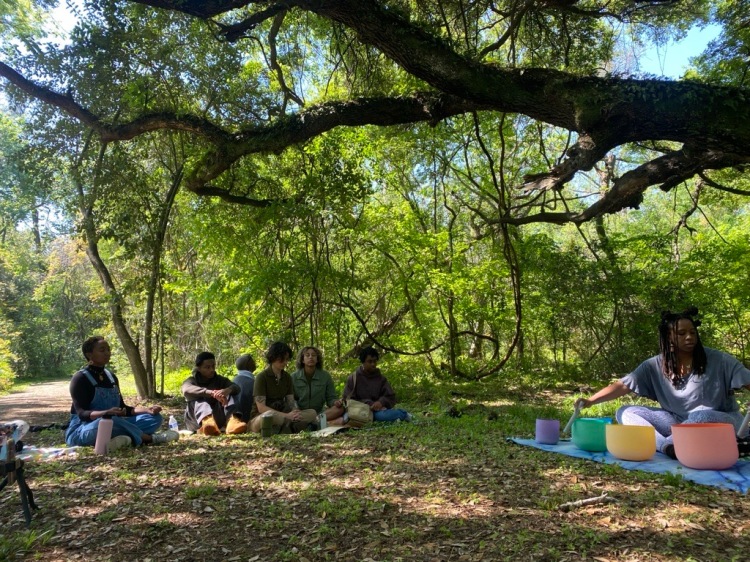By Zoe Gapayao, Community Outreach Manager
The 4-part Witness Series is a springtime event that is artist-led, nature-centered, and community-driven. For the past three years, we’ve explored together the experiences that communities of color have in the land of southeast Texas. Artist Kristi Rangel co-curates the series, partnering with artists from Native American, African American, Latinx, and Asian communities. By participating in the series through participatory public art experiences, the attendees become co-authors of each event.
The Witness Series speaks to environmental equity by spotlighting hidden green spaces in Houston and their hidden histories. Each March, Part 2 of the series takes place at E.R. and Ann Taylor Park, a forest park in the Sunnyside neighborhood with a fascinating history. This year, we had the honor of hearing the history from the descendants of E. R. and Ann Taylor’s family.
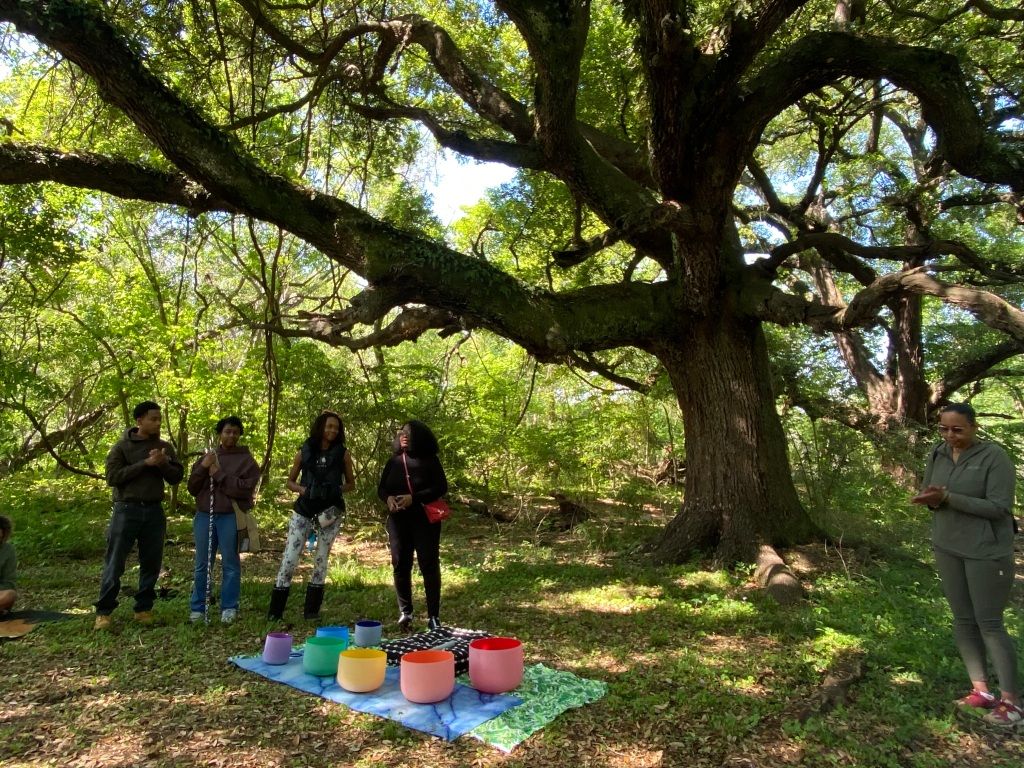
The historical marker at the park begins the story with Edward Ruthven (E.R.) Taylor, the son of a wealthy cotton broker, merchant, and slave broker in Houston. Dr. Beverly Stevenson, a descendant by marriage to Major William Stevenson Sr, the great-grandson of E. R. and Ann Taylor, communicated that the Taylors purchased Ann George from Hungerford, Texas, in 1856 to be a domestic servant and cook for the Taylor household. While Ann’s slave papers stated that she was 25-29 years old when purchased, she was 16 years old at the time. Ann and E.R., also 16 years old, lived in the Taylor household before E.R. was sent to Williston Seminary in Massachusetts for school. When the Civil War broke out, he returned and joined Waul’s Texas Legion in the Confederate Army. During the Battle of Vicksburg in Mississippi, E.R. was captured as a prisoner of war by Ulysses S. Grant. He contracted tuberculosis, and the Legion discharged him on July 4, 1863, to return home. Ann became his nurse, and during the course of restoring E. R. Taylor’s health, she became pregnant.
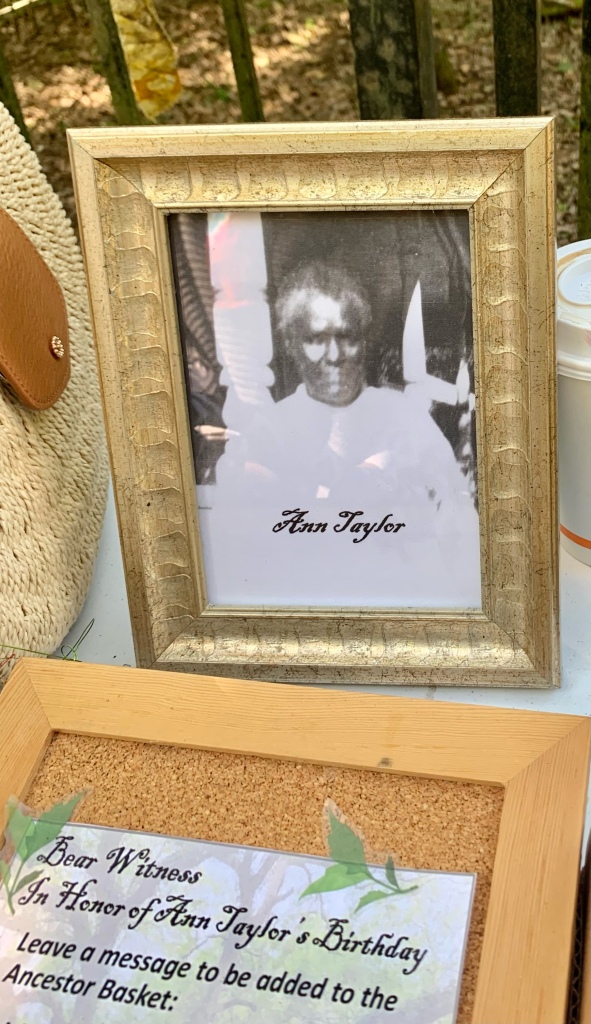
The Taylor family lived in prominent downtown Houston off Preston and Smith Streets in today’s Theater District. To keep the scandal of E.R. and Ann’s relationship out of the public eye, E.R.’s father helped him to purchase 640 acres of land in Pierce Junction outside the city, where they could live in isolation. The couple lived in a common-law relationship for 39 years, as interracial marriages were not yet legal in Texas.
They raised six mulatto children to adulthood on the property. Ann, who could read and write, educated her children, and they became some of the first African Americans in Texas to receive formal education. While E.R. and their children traveled around the United States and Europe, Ann Taylor’s life was spent on their land.
Over the years, land use shifted from farming to massive ranching to the discovery of oil. E.R. deeded half of his property to Ann in 1903. A few years before Ann’s passing, her family learned of potential oil deposits on their land. In 1906, Ann signed the first oil and gas exploration lease with Howard Hughes Sr. E. R. Taylor signed the first oil and gas lease with Gulf Production Company in 1916. The Pierce Junction Oil Field had its first substantial oil strike in 1921, with 10 million barrels of oil under the original acreage.
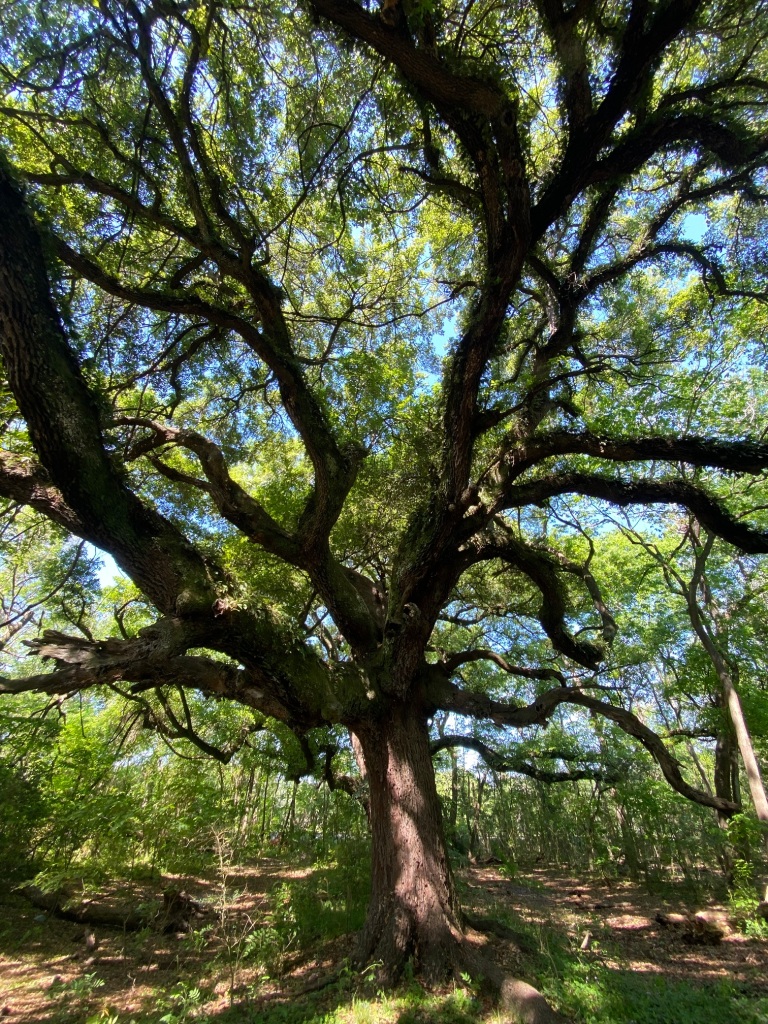
In 1909, Ann passed away, and she is buried on the original Taylor homestead alongside two of their children who did not reach adulthood. E.R. passed away in 1924 and was buried with his white family members at Glenwood Cemetery.
“For me, the story of Ann Taylor is that here’s this woman who was the backbone of her family, who also reared children who went on to do lots of great things for the Black community. She was hidden away in life, and now here in death, she’s still hidden away.”
Kristi Rangel
In 1986, the family donated 26 acres of the original homestead to the City of Houston. Like many green spaces in communities of color, this park has historically been ignored and under-resourced, leaving many people from the area unaware of its existence. The park, however, is known by birders and nature-enthusiasts as habitat for many migratory species. The forest oasis of sprawling live oak trees and the pond ecosystem continue to serve as valuable wildlife habitats.
Alongside the family, the park is stewarded by groups such as the Houston Parks and Recreation Department, Houston Parks Board, Friends of E.R. and Ann Taylor Park, Nature Heritage Society, and Houston Audubon. With each nature-based program, trash clean-up, and community event provided at the park, more Sunnyside residents find enjoyment in their neighborhood green space.
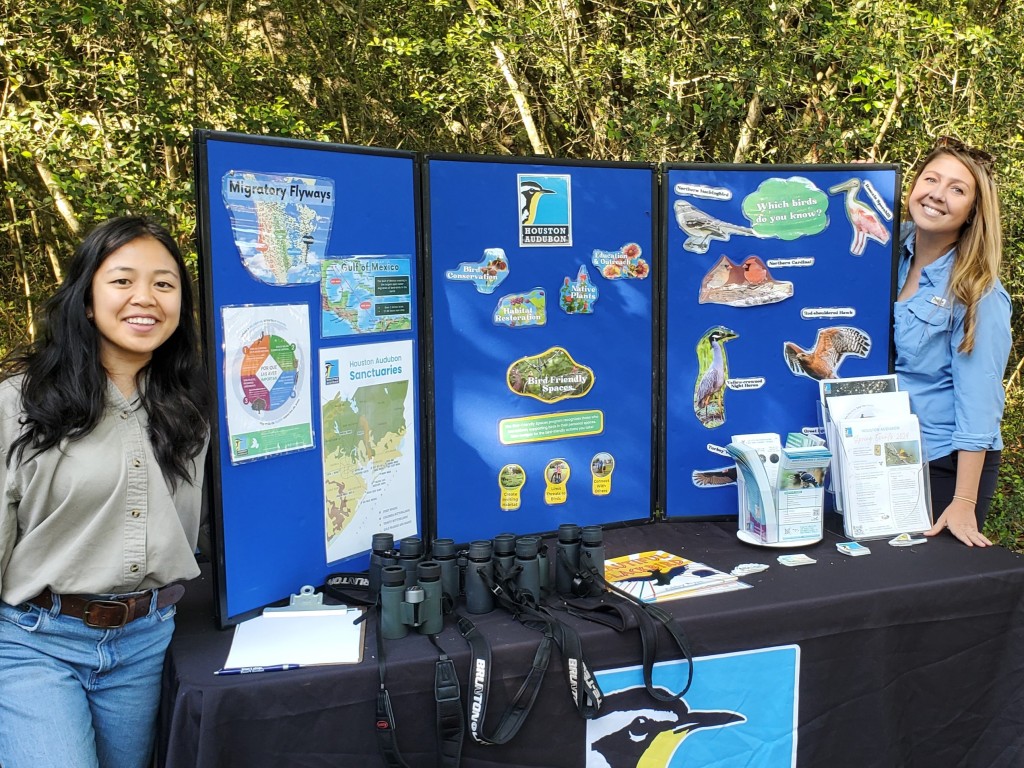
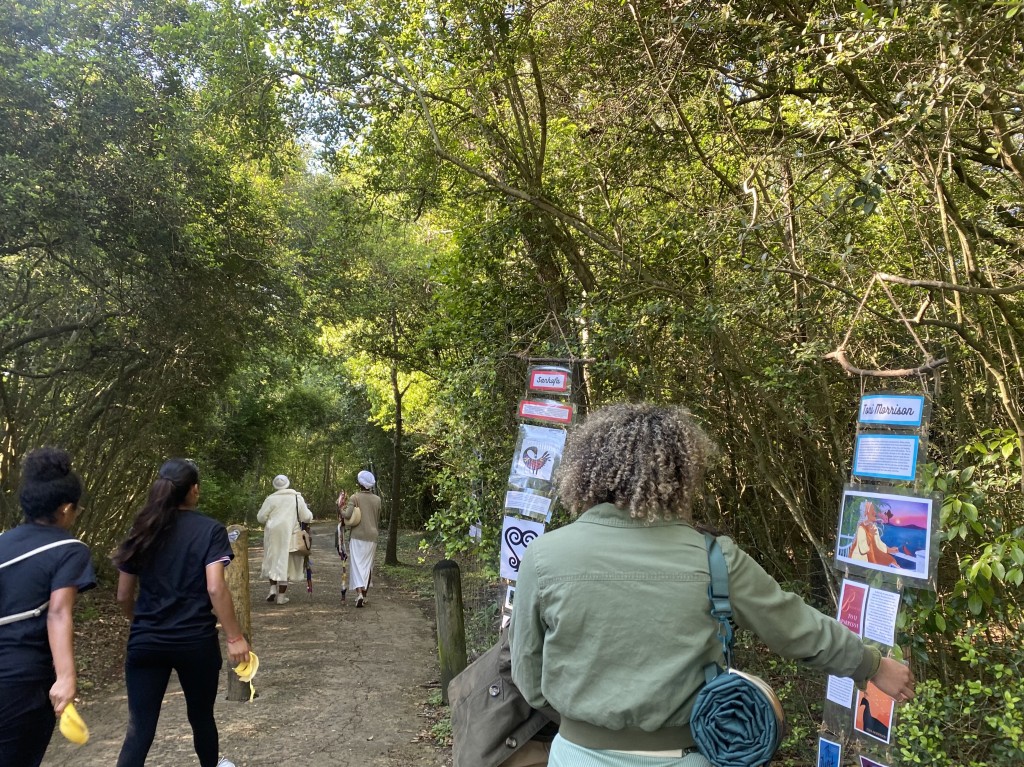
“Bear Witness”: African American History and Connection to the Land was supported by Community Artists’ Collective, Nature Heritage Society, Houston Audubon, The Nature Conservancy, and Houston Parks and Recreation Department. Please read more about the Witness Series through the Community Artists’ Collective’s website. Join us for Part 3 of the Witness Series: World “Meditations/Meditaciones”–Latino Connections to Wildlife and Nature in the East End and the World on April 27th at Mason Park!

